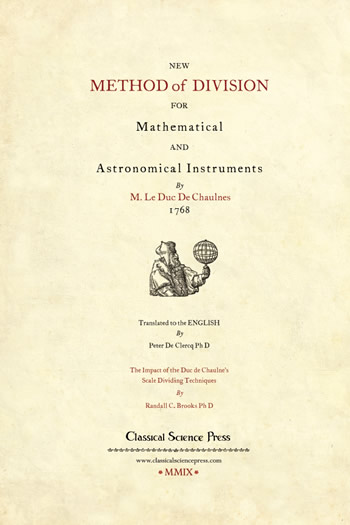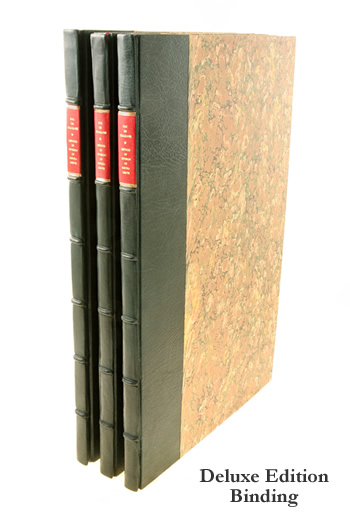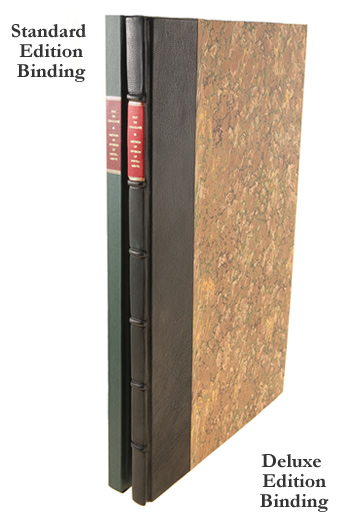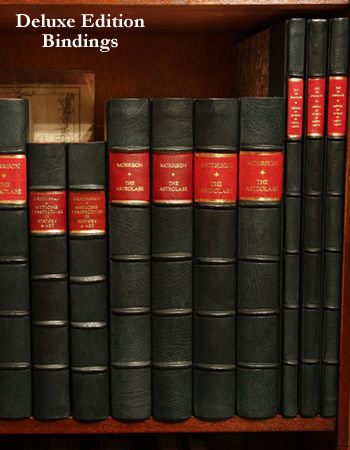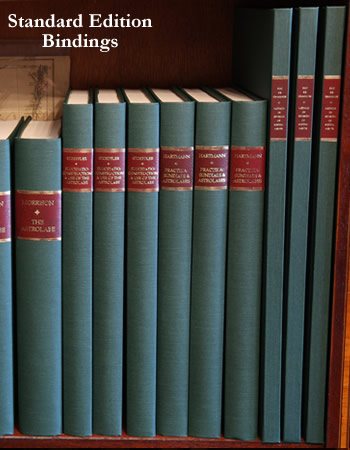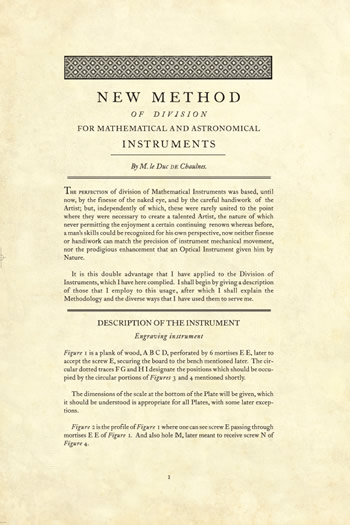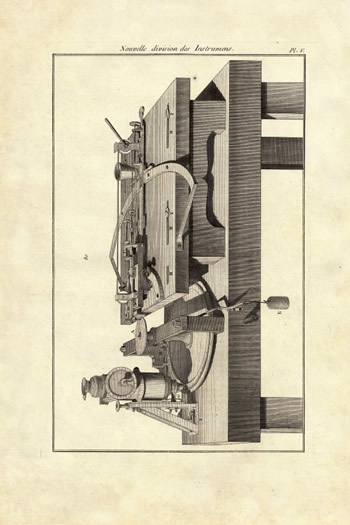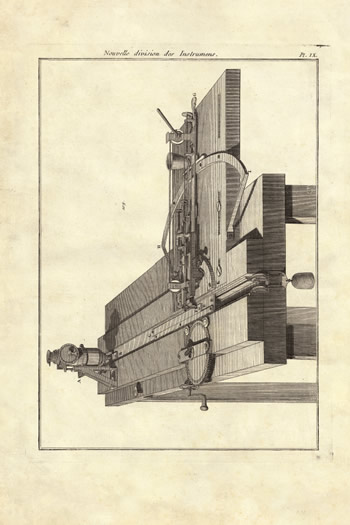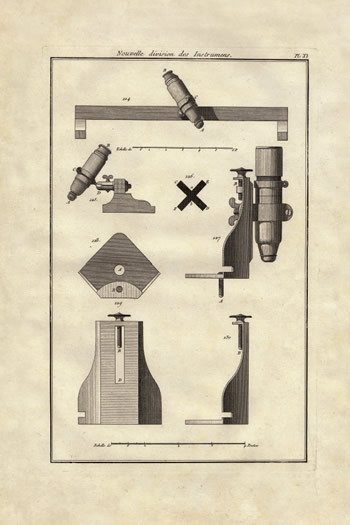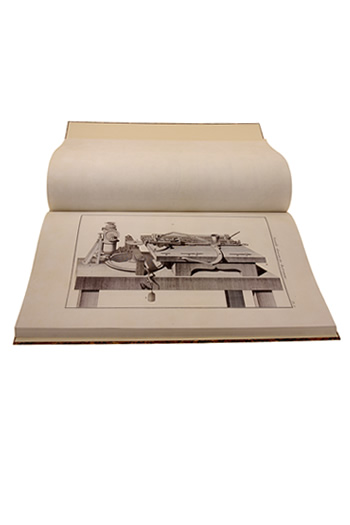
 |
 |
 |
 |
 |
 |
BOOK CATALOGNew Method of Division for Mathematical and Astronomical Instruments M. le Duc De Chaulnes, 1768 Hard cover Standard Edition Book Size - 11" x 17" Deluxe Edition Book Size - 11" x 17" Out of PrintTranslated from the French by Peter de Clercq, bound together with a relevant chapter of Randall Brooks' doctoral thesis "The Impact of the Duc de Chaulnes Scale Dividing Techniques." The Duc de Chaulnes’ innovations and achievements in the development of the circular and linear dividing engine have always been overshadowed by those of Jesse Ramsden. This was the result of his success based on two main factors — Ramsden’s superior mechanical skills and his understanding of mechanical processes which led to his receiving an award from the Board of Longitude in Britain. However, the Duc de Chaulnes’ technique and approach was superior to Ramsden’s and was later adopted by Edward Troughton for his 1806 circular dividing engine and by Henry Kater in the technique he proposed in 1814. Printed in large format with attention to detail, such as margins, leading, and type choices including font italics as close as possible to be sympathetic to the original layout and delicacy, which was the norm in the mid-18th century. The final size of the book is 11" x 17" (28cm x 43cm). Classical Science Press also offers a Deluxe Collector’s Edition of this volume. The edition is quarter-bound in goatskin with raised bands, leather-embossed spine label, and marbled boards.
|
